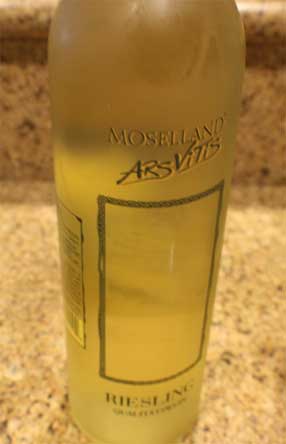Ingredients:
For 2 drinks:
8 oz Moselle Riesling
8 oz Sparkling wine, we like a dry champagne
1 medium lemon
2 tablespoons simple syrup
a few Mint sprigs
For a Punch Bowl or pitcher:
1 bottle Moselle Riesling
1 bottle Champagne
2 -3 lemons
1/2 cup simple syrup
a few Mint sprigs
Simple syrup recipe:
1 cup water
1 cup sugar
boil for 10 minutes
printer friendly Metric Conversion Chart
|
|
The Short history behind this German Drink is that it was a mix of all the bottles of wine that had a bit left in them and then flavored with lemon, mint ot lemon balm, and then add bit of fizz with some champagne.
It was served at the end of the meal and so started out with the name, Kalte Ende or Cold End. However it sounds very much like Ente (pronounced like "END-tay" which means Duck.
Read more about the History of Cold Duck Here
Many Germans make it in a pitcher that looks something like a duck.
The pour narrow top and pour spout look a bit like the head of the duck
and the handle a wing.
|
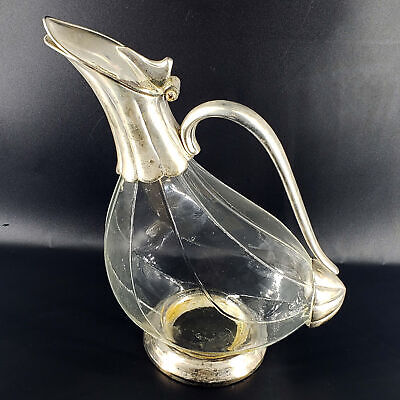 |
Directions;
Gather your ingredients: make the simple syrup, and some lemon twists.
Chill the champagne or sparkling white wine. Also traditionally a Mosel Riesling from the Mosel region of Germany.
I am using a cocktail shaker because I am not going to make a pitcher or punch bowl full.
I also like to blend and really chill down the ingredients.
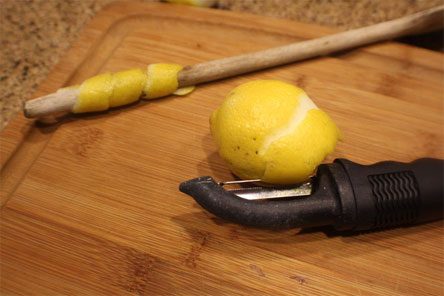
Make some twists by peeling the yellow skin of a washed lemon.
Wrap them around a round stick, like a wooden spoon or anything similar. In 5 minutes they will take on the shape. |

Lemon balm mint is traditional but I am using just a spearmint. |

I used a glass that was about 4 oz. or 1/2 cup. Pour 2 glasses of the Riesling in the shaker for 2 drinks over some washed ice. Why wash the ice? Because it does absorb flavors from the freezer. |
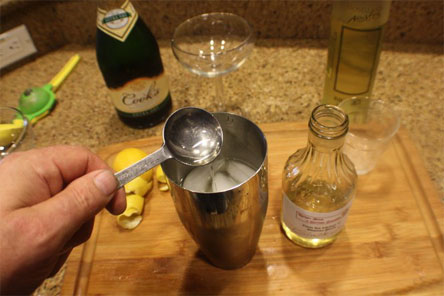
Add 2 tablespoons of simple syrup. |

Add the juice of one lemon, 1/2 lemon per drink. |
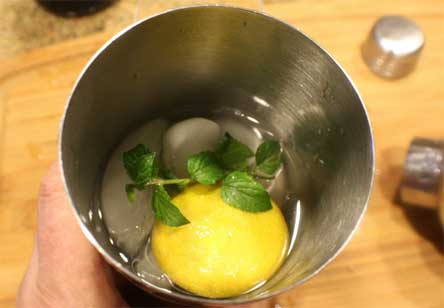
I added the lemon and mint and let it sit in the fridge for a minute so the flavors will infuse. Meanwhile I'll prepare the glasses and open the champagne. |
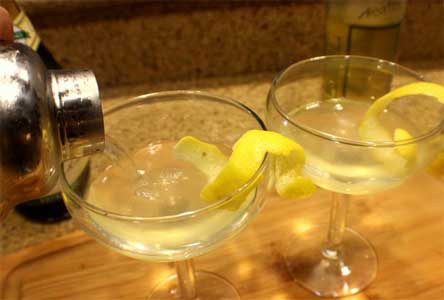
Pour the wine into the glasses with the twist hanging over the edge. Some say this is the traditional "duck" position. |
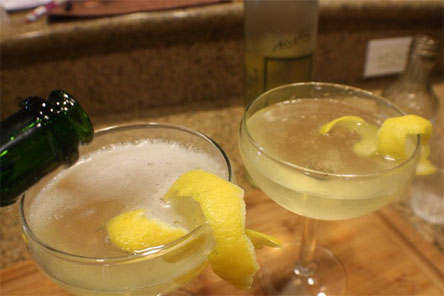
Next pour some champagne into the glass. |
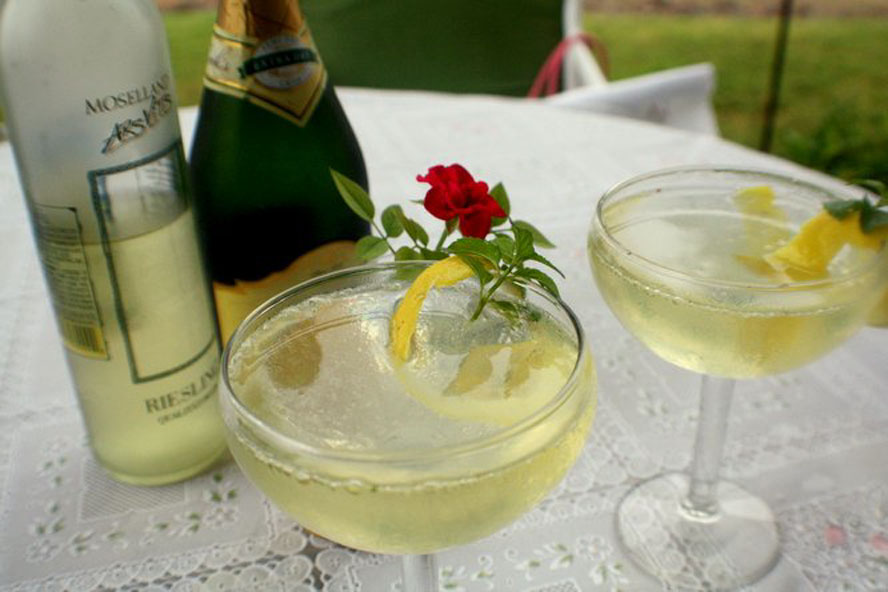 |
Garnish with a Sprig of mint and serve!
|
Why do they call this Kaltes Ente or Cold Duck?
According to the legend Prince Clemens Wenceslaus, the last Archbishop and Elector of Trier for a feast on the terrace of the Koblenz castle ordered all the ends of the wines to be combined with champagne which they flavored with lemon and mint and served it at the end of the meal so they called it Kaltes Ende or Cold End. Usually a hot coffee or mocha was served. At some point in time the name was altered to Kaltes Ente or cold duck. |
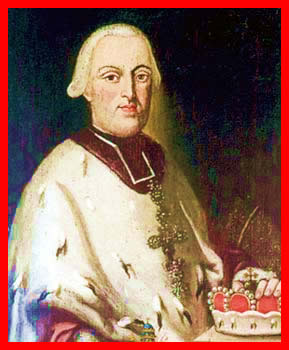
Prince Clemens Wenceslaus of Saxony |
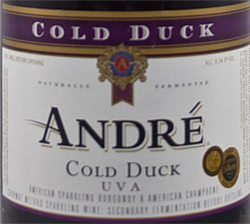 |
Some of you may remember a sparkling wine called "Cold Duck"
The wine was invented by Harold Borgman, the owner of Pontchartrain Wine Cellars in Detroit, in 1937 |
Why do German's Grow Riesling ?
The planting of Riesling in Germany was originally almost an accident. It had been brought into Germany in the Middle Ages by the monks, who traded varieties across t areas covered by their efforts at viticulture. Just as Pinot Noir (or Spätburgunder) was dispersed eastward from Burgundy to the Mosel and Rhine basins, Riesling came northwestward from Austria (it is thought, under the influence of the Church) to the Mosel.
Riesling seems to positively thrive on poor soil. Simple crumbled slates, sandstones, calcareous marls, volcanic tuffs, and other lean root environments seem to bring out a kind of elegant style in the grape. If it’s planted in excessively loamy soil, it can lose that elegance.
Riesling wines get the bad rap of always being sweet. And it is true that modern trends have assigned this role to Riesling in certain production areas. However, we know that this sweetness is optional and not at all necessary for the wine if it is made from grapes of good quality. Germans drink their Riesling usually quite dry, and if the grapes are ripe, this dryness is not unpleasantly sharp. I’d like to distinguish between sweet Riesling and noble sweet Riesling. In the former, the sugar is often produced by beets or canes and is added to the must. As necessary as this may be in less successful vintages, it cannot produce great wines.
When Riesling is allowed to ripen slowly in the foggy river valleys of the Mosel or Rhine, sometimes it’s benefited by an outbreak of the noble rot Botrytis cinerea. The tiny mycelia of this fungus pierce the grape skin and allow water to escape during the warm, sunny autumn days, and assist in acquiring further concentration, both of sugars and acids. Then it’s up to the vintner whether to leave some of this sugar in the wine or ferment it to dryness. A little extra sulfite seems to be all that’s required to stop fermentation, if that’s what the choice is. |
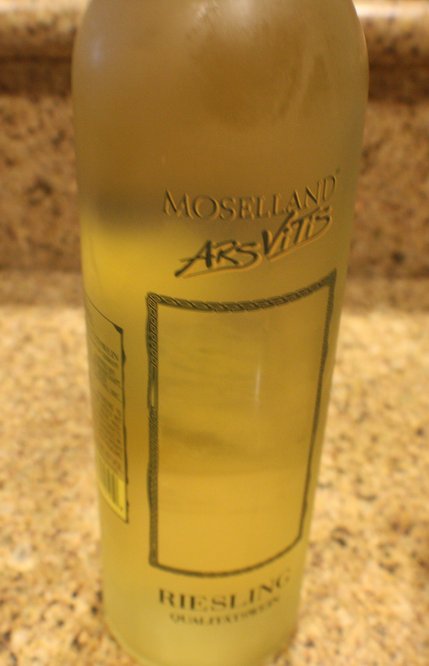 |
Then in the 19th century a disastrous series of deep winter freezes killed most of the Pinot Noir roots but left the Riesling plantations healthy. After this experience the authorities encouraged replanting the freeze-ravaged areas with Riesling. Today it is successfully grown in some of the more severe climates where Vitis vinifera has been able to survive, including my own home state of Michigan.
In the German-speaking world (Germany itself, Austria, and Alsace) Riesling takes center stage and is the grape from which all the greatest wines are made. In these northerly latitudes, Riesling must be planted to the best sites if it is to ripen predictably, and takes a full two weeks longer to come to harvest than other grapes grown here. Why plant a grape with the disadvantage of slow ripening in a cool climate?
As centuries of winemaking history have shown, this disadvantage can be converted into an advantage under the right conditions. In the best years, Riesling is hanging on the vines well past Allerheiligentag; the first day of November’s All Saints vineyard worker’s holiday. Its property of positively requiring a long, slow, cool ripening means that it can acquire the most refreshing, cool, and complex acid structure of any variety. It’s this fruity tartness that focuses the wine’s other taste elements and invites sip after sip. Although all winegrowers anxiously watch the sugar levels in their ripening grapes, the Germans are just as conscious of the falling acidity and its change from the sharp malic to the rich, round tartaric variety.
More about this from Grapeseek.org |
|
|
|
|
|
| Our German Cookbook |
|
A recipe book and short biography of my Grandmother Emma Block. Her recipes, culture and cooking styles that were brought over from Germany. How they evolved when she came to America in the early 1900s and settled in Portland, Oregon on the west coast of the United States. Over 100 recipes
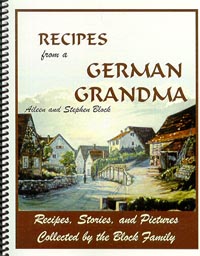
|
Bonus Recipe CD with the Ebook and recipes with step by step pictures

Look inside and check out a sample of our book |
|
| Order our Cookbook with the CD |
|

Order the Kindle Version |
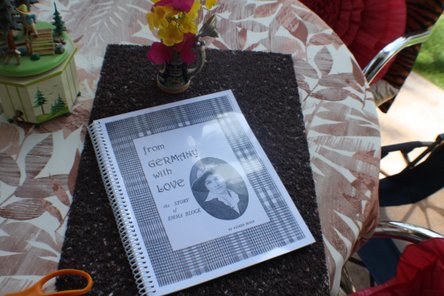 \ \
Biography of my grandma
Emma Block
From Germany with Love tells the story of my grandma, Emma Block, growing up in a little town in Baden/ Würtemberg, Germany near Heidelberg named Steinsfurt. Then at the age of 15 immigrating to the United States, taking a train with one of her sisters and brothers to Hamburg and sailing the Atlantic with other hope filled Germans wanting to make a life in the "New World". It was not easy but with good values learned in her German upbringing made a full life, had a wonderful family with lots of fun and celebration including the great German meals.
Order Here
15.97 |
|
|
|
Looking for another recipe?
Enter your recipe request and search
|
Where to shop for German Foods and Things
Do you have a question or comment on this recipe?
make sure you put the recipe name in the subject line
Listen to German Music
Listen to the Chicken Dance, and download it
CD's recommendations and links
Do you have a German Name?
Also what your German name means
Do you want to learn to speak a little German?
Learn one word a day.
Explore your German Heritage
Find out if your relatives came over through Ellis Island and more good links
|




